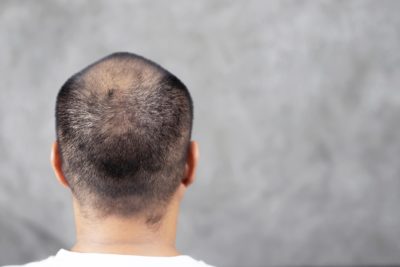The average person has about 100,000 hairs on their scalp and loses about 100 each day without even noticing. In fact, many lose up to 50 percent of their hair before they even suspect a problem. If you’ve noticed some hair loss you may be wondering whether it’s a normal, a temporary part of the hair cycle, or an indication of things to come.
100 each day without even noticing. In fact, many lose up to 50 percent of their hair before they even suspect a problem. If you’ve noticed some hair loss you may be wondering whether it’s a normal, a temporary part of the hair cycle, or an indication of things to come.
Though most men experience some loss as they age, the reality is that hair loss can occur for a variety of reasons at any age. Exactly when an individual will begin to shed scalp hair and just how much they can expect to lose depends largely on genetics.
Teenage Hair Loss
While uncommon, hair loss can begin as early as at age 15, coming on gradually with a thinning or receding hairline. Hair loss or thinning at such an early age can be especially difficult but, depending on the cause, it can be stopped and reversed. Consult your primary care doctor to determine if the hair loss is due to a nutrient deficiency, hormonal imbalance, illness, medications, or other contributing factors.
Hair Thinning or Loss in Your 20s
Male pattern baldness (androgenic alopecia) most often begins when a man reaches his mid to late 20s. This can have a significant negative impact on confidence, self-esteem, and one’s social life. Some people adjust by simply shaving their head while others find it the overall experience more challenging and difficult to accept. If you’re noticing signs of male pattern baldness in your twenties, talk to a hair restoration specialist to discuss preservation and treatment options.
Thirties and Beyond
By age 30, men have a 25 percent chance of experiencing some hair loss, and by age 50, 50 percent note at least some loss. Approximately two-thirds of 60-year-olds experience balding to some extent, if not complete. Yet, just because we expect to succumb to male pattern baldness as we age doesn’t make it any easier to bear.
Signs of Male Pattern Baldness
The most well-known categorization for hair loss in men is the Hamilton-Norwood classification system. It focuses on hair loss that can be seen in the following areas:
- Temples – Hair starts to thin around the temples and on top of the back of the head, known as the vertex or crown.
- Receding Hairline – Hair begins to thin and move back around the front of the head on the sides, making an M shape as the two sides recede faster than the middle. This is one of the most common types of male hair loss.
- Top of the Head – You may notice thinning at the top years before baldness becomes visible.
The good news, for super optimists, is that neither women nor women are pre-disposed to losing other body parts, like hands, feet, kneecaps, and worse. But for good or ill, we are pre-disposed to lose hair. And yet, thanks to people like us, DiStefano Hair Restoration Center, hair loss doesn’t need to be permanent. Contact us today for a free consultation to discover how you can go through life – your whole life – with a full head of hair, even if you’re already lost some.


